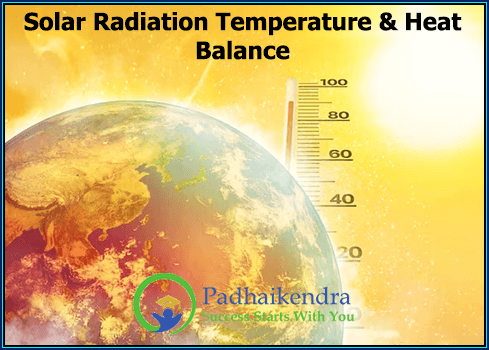Solar radiation is the energy emitted by the sun and received by the earth in the form of electromagnetic waves. This energy is responsible for driving several processes on earth, including weather patterns, ocean currents, and the overall climate system. The temperature and heat balance of the earth’s atmosphere is largely regulated by the incoming solar radiation and its interaction with the earth’s surface and atmosphere.
When solar radiation enters the earth’s atmosphere, it is either absorbed, reflected, or scattered. Some of the radiation is absorbed by the atmosphere, while others pass through and reach the earth’s surface. The amount of solar radiation absorbed by the earth’s surface depends on several factors, including the angle of incidence, the type of surface, and the amount of atmosphere that the radiation passes through.
The absorbed radiation heats the earth’s surface, causing it to radiate heat back into the atmosphere in the form of infrared radiation. Some of this radiation is absorbed by greenhouse gases such as carbon dioxide, water vapor, and methane, which trap the heat in the atmosphere, leading to an increase in temperature. This process is known as the greenhouse effect and is essential for maintaining the earth’s temperature at a habitable level.
The temperature and heat balance of the earth’s atmosphere is also affected by other factors such as air circulation, ocean currents, and the distribution of land masses and water bodies. The earth’s surface is not uniformly heated, which creates differences in temperature and pressure that drive the movement of air masses, leading to the formation of weather patterns such as winds, clouds, and precipitation.
Overall, the temperature and heat balance of the earth’s atmosphere is a complex interplay between various factors such as solar radiation, greenhouse gases, air circulation, ocean currents, and the distribution of land and water masses. Understanding these factors and their interactions is essential for predicting and mitigating the impacts of climate change on the earth’s environment and human societies.





